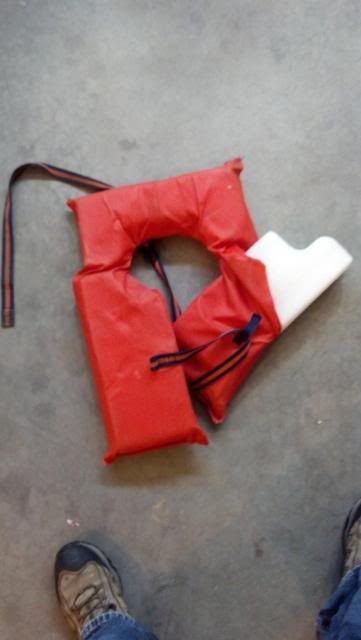Re: Starmada Testing Laboratories
Okay
With the debate on boats and floats!
I decided to do some further research on how much flotation is really required to float our boats.
http://www.glen-l.com/weblettr/webletters-7/wl55-flotation.html
HOW TO FIGURE FOAM FLOTATION VOLUME
A simple series of calculations or the use of a pocket calculator can determine the volume of foam flotation required to provide flotation capabilities to an object. The terms used for these calculations are as follows:
W = Weight in lbs. of object in air
S = Specific gravity of object
PB = Portion of weight in lbs. with positive buoyancy
NB = Portion of weight in lbs. With negative buoyancy
F = Flotation value of foam in lbs. per cubic foot
STEP l: Determine the weight and specific gravity (*) of the boat and the items inside (see chart for specific gravity of common materials, or use any engineering handbook).
(*) Specific gravity means the ratio of mass of an object to that of an equal volume of water. For example, a cubic foot of solid fiberglass weighs about 115 lbs., while a cubic foot of salt water weighs about 64 lbs. Thus, 115 lbs. ? 64 = 1.8 Specific Gravity. In other words, the fiberglass is 1.8 times HEAVIER than salt water. Any object with a specific gravity OVER 1.0 will NOT float; it will have negative buoyancy. Any object with a specific gravity LESS than 1.0 will float, while an object having a specific gravity of 1.0 will float awash, or have neutral buoyancy.
STEP 2: Figure the weight of the object when totally immersed in water /this provides the quantity PB, or that portion of the object that has flotation capabilities). For example:
W ? S = PB
(If PB equals or exceeds W, the object will float. Subtracting W from PB will indicate the amount of POSITIVE flotation value in lbs. Which the object contains; no flotation material is required for this object in theory).
STEP 3: If PB is LESS than W, determine the negative buoyancy (NB) of the object, or:
W - PB = NB
STEP 4: Determine the volume of flotation material required, or:
NB ? F = Volume of foam flotation material in cubic feet.
Note: As a factor of safety (call it "FS"), it is common to multiply the result by 1.33, and use this total for the actual amount of foam used.
If a pocket calculator is available, these steps can be transposed into the following algebraic key steps, or:
- W Div S + W = Div F = X F.S. = (**)
Note that the letter-designated keys refer to variables which must be entered; not actual keys.
(** ) If the total is a MINUS number, this shows a reserve of flotation volume over and above that required for flotation purposes. If the total is ZERO, it means that buoyancy will be neutral.
EXAMPLE: Assume a 1500 lb. hull made from solid fiberglass. A foam will be considered for flotation purposes capable of supporting 60 lbs. per cubic foot. Thus, using a calculator:
-1500 = 1.8 + 1500 = 667 = 60 = 11.11 cu. ft. x 1.33 (factor of safety; applies in ALL cases) = 14.78 cu. ft. of foam required to support the hull only.
Specific Gravity of Some Common Materials
(Approximate values in salt water. For calculations in fresh water, increase values by about 2 1/2%.)
Aluminum 2.6
Bronze 8.0
Concrete 2.25
Fiberglass 1.5/1.8
Douglas-fir .5
Gasoline .72
Glass 2.5
Iron (cast) 7.0
Lead 11.0
Mahogany .6
Man 1.1*
Oak (white) .8
Oil .83
Spruce (Sitka) .42
Steel 7.8
Teak .83
* For people, it is common to provide 1/3 cubic foot of foam assuming 150-200 lb. person when they are immersed to keep them afloat.
I found the example pretty good and I know it's for fiberglass but Aluminum is also listed. I'll take a wack at the formula when I get some more time. Hopefully one of you engineer's beat me to it and save me some time...




























